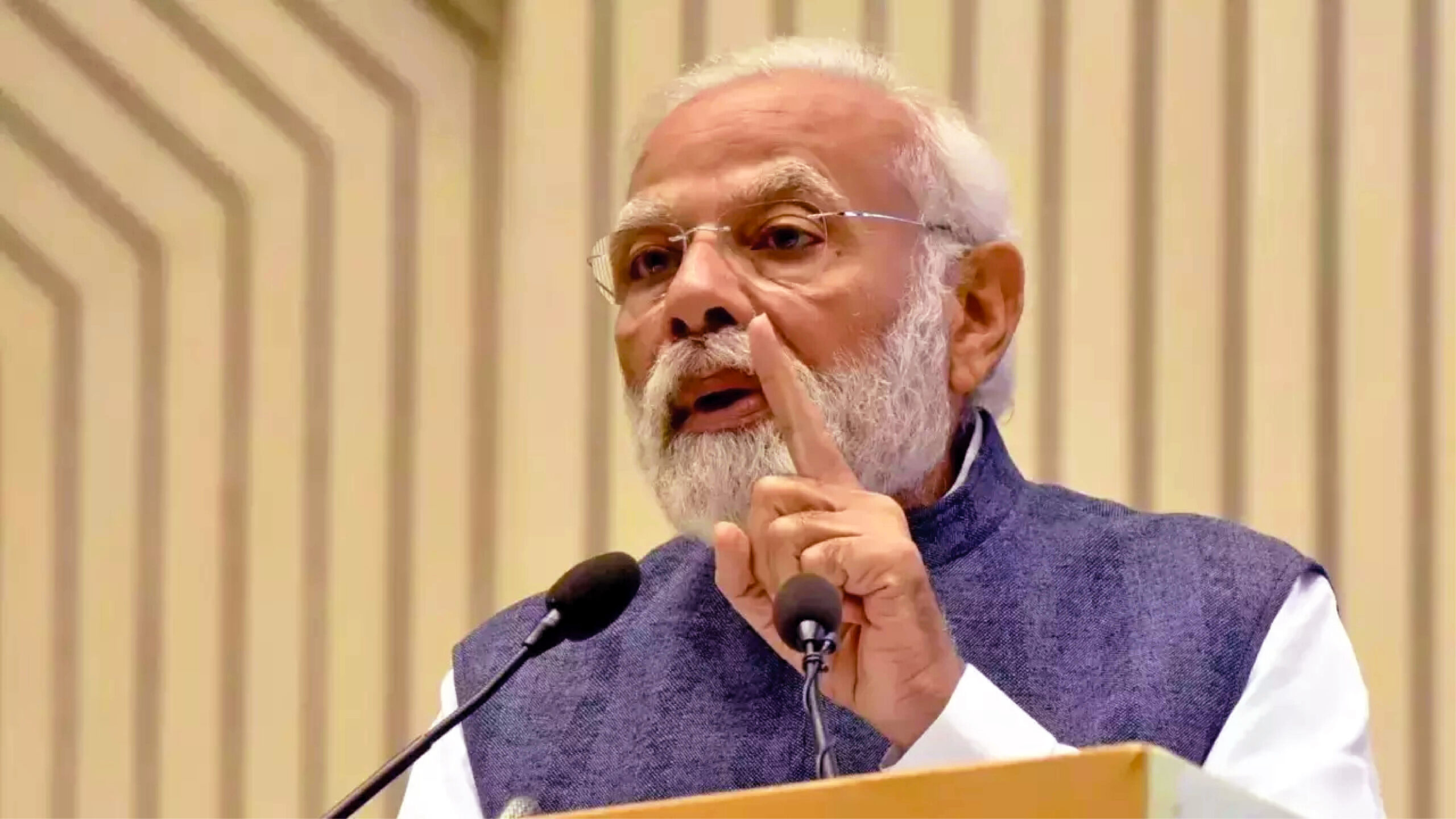
What has the Modi government done for the well-being of India’s farm community? This is a question that is often asked. Well, for starters, the government has been transferring cash directly to farmers. Over Rs 1.35 lakh crore has been paid (via PM-KISAN, since its inception, in December 2018) to over 12 crore farmers. From just 255 million tonnes in 2012-13, under an inept Congress regime, to 297.5 million tonnes in 2019-20 and 303.34 million tonnes of foodgrain production in 2020-21, is a vindication of how India’s self-sufficiency, with an exportable surplus in the foodgrain space, has added to India’s economic heft. The latest data available with the Food Corporation of India (FCI) shows wheat procurement crossed 418 lakh metric tonnes (LMT) till May 29, 2021, in the ongoing rabi marketing season (RMS), higher than 390 LMT in RMS 2019-20. The current year’s wheat procurement figure is the highest ever in post-independent India. This is also the first time that wheat procurement has crossed the 400 LMT mark. The record wheat procurement comes just after the all-time high procurement of paddy. In the 2020-21 Kharif marketing season (KMS), paddy procurement crossed 789 LMT, compared to 773 LMT in KMS 2019-20, according to FCI data.
Given the hue and cry over Minimum Support Price (MSP), it is only apt to ask, what has been the track record of the Modi government? Without an iota of doubt, the track record on MSP has been exemplary. Minimum Support Price (MSP) is a form of market intervention by the Central government, to insure agricultural producers against any sharp fall in farm prices. For the 2021-22 crop year, the Modi government raised the MSP of paddy (common variety) by Rs. 72, to Rs 1940 per quintal from Rs 1868 per quintal in the year-ago period. The MSP of Grade A variety of paddy has also been increased by Rs. 72 to Rs. 1960 per quintal this year from Rs. 1888 per quintal last year. Among coarse cereals, the government increased the MSP of jowar (hybrid) by Rs 118 to Rs 2738 per quintal from Rs 2620 per quintal last year.
A similar increase has been made in support price of jowar (Maldani) to Rs 2,758 per quintal for the 2021-22 crop year. The government increased the support price of bajra by Rs 100 to Rs 2,250 per quintal from Rs 2,150 per quintal last year, while ragi support price has been increased by Rs 82 to Rs 3,377 per quintal from Rs 3,295 per quintal last year. The support price of maize has been increased marginally by Rs 20 to Rs 1,870 per quintal for the 2021-22 crop year from Rs 1,850 per quintal last year. The government has made concerted efforts over the last few years to realign the MSPs in favour of oilseeds, pulses, and coarse cereals to encourage farmers to shift to the larger area under these crops and adopt the best technologies and farm practices, to correct the demand-supply imbalance. The added focus on Nutri-rich, Nutri-cereals is to incentivise their production in the areas, where rice-wheat cannot be grown without long-term adverse implications for groundwater table.
To boost pulses and oilseeds’ production and reduce the country’s dependence on imports, the government increased the support price of tur and urad dal by Rs 300 to Rs 6,300 per quintal each. Moong support price has been increased by Rs 79 to Rs 7,275 per quintal for the 2021-22 crop year.
Among Kharif-grown oilseeds, the government increased the support price in the case of sesamum by Rs 452, to Rs 7,307 per quintal and that of groundnut by Rs 275 to Rs 5,550 per quintal for the 2021-22 crop year. Sunflower seed MSP has been increased by Rs 130 to Rs 6,015 per quintal from Rs 5,885 per quintal. For oilseeds, the government has approved an ambitious plan for the free distribution of high-yielding varieties of seeds to the farmers for the Kharif season 2021 in the form of mini-kits.
The special Kharif programme will bring an additional 6.37 lakh hectare area under oilseeds and is likely to produce 120.26 lakh quintals of oilseeds and edible oil amounting to 24.36 lakh quintals. On fertilisers, retail prices of di-ammonium phosphate (DAP) recently rose in line with global markets, but the government increased the subsidy portion to ensure farmers continue to get the key soil nutrient at Rs 1,200 per bag. In effect, subsidy on DAP was raised by a massive 140% from Rs 500 to Rs 1,200 per bag.
Coming to the Modi government’s track record, the numbers speak for themselves. MSP payment to farmers for paddy rose by 2.4 times to Rs 4.95 lakh crore between 2014 and 2019 under the Modi government, as against only Rs 2.06 lakh crore, under the previous, Congress-led regime, between 2009 and 2014. MSP to farmers for wheat increased by 1.77 times during 2014-19, to Rs 2.97 lakh crore, compared to Rs 1.68 lakh crore in the 2009-14 period. MSP payment for pulses surged by a whopping 75 times under the Modi government to Rs 49,000 crore from 2014-19, compared to a measly Rs 645 crore, under the Congress-led UPA-2. Payment to farmers for Oilseeds and Copra also surged 10 times under the Modi government, to Rs 25,000 crore, during the last five years, in comparison to MSP payment of just Rs 2,460 crore, in the period from 2009 to 2014, under the Congress-led, United Progressive Alliance (UPA) establishment.
Has the Modi government been fair to farmers in Punjab? Well, the straight answer to that is a loud and clear, ‘yes’. In April and May 2021, a little over Rs 21,000 was paid to wheat-growing farmers as MSP, of which a solid Rs 8,200 crore was paid to farmers in Punjab alone. Do the farm bills dismantle the existing ‘APMC-Anaj Mandi’ structure? No, they do not. Going forward, farmers will have the choice and freedom to sell their produce either at APMC designated wholesale Mandis or in ‘Trade Areas’. There will be no taxes or levies of either State or Central government, on trade conducted in these ‘Trade Areas’, thereby reducing the cost of transaction in the entire food chain, from farm to fork. Hence, the whole narrative that ‘Trade Areas’ are anti-farmer is false.
Talking of farm infrastructure, the Modi government launched a new Agriculture Infrastructure Fund worth Rs/ 1 lakh crore, meant for setting up storage and processing facilities, which will help farmers get higher prices for their crops. The government launched the Pradhan Mantri Matsya Sampada Yojana – a flagship scheme for focused development of the fisheries sector in the country, with an estimated investment of Rs. 20,050 crore during a period of the next five years. The Modi government also launched a Rs. 15,000 crore Animal Husbandry Infrastructure Development Fund with an interest subsidy scheme to promote investment by private players and MSMEs in dairy, meat processing, and animal feed plants, a move which is expected to create 35 lakh jobs. So the government has been working at strengthening farm infrastructure. This, along with the new Farm Laws (in abeyance temporarily), will boost the productivity of the agrarian sector to areas beyond just growing traditional crops like paddy or wheat.
The Farm Laws also allow for contract farming, whereby farmers can enter into contracts, at a predetermined price, even before the crop has been harvested, with private companies, aggregators, food processors, and exporters. This is an unprecedented reform, as it allows farmers to lock in a good price for their harvest and insulates them from any post-harvest, product-related, or price volatility. The formation of 10,000 Farmer Producer Organisations (FPOs) is on track. These FPOs are largely clusters or groups of farmers who are brought together so that credit and other assistance can be extended to them. There are already about 5000 FPOs in India, of which only a handful are private. More than 3900 FPOs are affiliated to NABARD or small farmers’ agri-business consortium (SFAC). Hence allegations of corporatisation and blanket privatisation of Indian agriculture are baseless.
Huge growth has been seen in the export of cereals with the export of non-basmati rice growing by 136.04% to $4794.54 million, wheat by 774.17% to $549.16 million, and other cereals (millets, maize, and other coarse gains) by 238.28% to $694.14 million in FY21. India’s agriculture exports (including marine and plantation products) have beaten the pandemic, registering a growth of 17.34% to $41.25 billion in 2020-21. In Rupee terms, the increase in agri exports is 22.62%, with exports during 2020-21 amounting to Rs 3.05 lakh crore as compared to Rs 2.49 lakh crore during 2019-20.
India’s agricultural and allied imports during 2019-20 were USD 20.64 billion and the corresponding figures for 2020-21 are $20.67 billion. Despite Covid, the balance of trade in agriculture has improved by 42.16% from $14.51 billion to $20.58 billion.
For agriculture products (excluding marine and plantation products), the growth is 28.36% with exports of $29.81 billion in 2020-21 as compared to $23.23 billion in 2019-20. India has been able to take advantage of the increased demand for staples during the Covid period. Huge growth has been seen in the export of cereals with the export of non-basmati rice growing by 136.04% to $4794.54 million; wheat by 774.17% to $549.16 million; and other cereals (millets, maize, and other coarse gains) by 238.28% to usd 694.14 million.
The organic exports during 2020-21 were $1,040 million as against $689 million in 2019-20, registering a growth of 50.94%. Organic exports include oil cake/meals, oilseeds, cereals and millets, spices and condiments, tea, medicinal plant products, dry fruits, sugar, pulses, coffee, etc. Exports have also taken place from several clusters for the first time. For instance, the export of fresh vegetables and mangoes from Varanasi and black rice from Chandauli has taken place for the first time, directly benefiting farmers of the area. Exports have also taken place from other clusters viz. oranges from Nagpur, bananas from Theni and Ananthpur, mangoes from Lucknow, etc. Despite the pandemic, export of fresh horticulture produce took place by multimodal mode, and consignments were shipped by air and sea to Dubai, London, and other destinations from these areas. Hand holding by the Modi government, to build market linkages, post-harvest value chains, and an institutional structure such as FPOs, enabled North East farmers to send their value-added products beyond the Indian borders. Cereal exports have done well during 2020-21. The country has been able to export to several countries for the first time. For example, rice has been exported to countries like Timor-Leste, Puerto Rico, Brazil, for the first time. Similarly, wheat has been exported to countries like Yemen, Indonesia, Bhutan, and other cereals have been exported to Sudan, Poland, Bolivia.
Sugarcane-growing farmers too have benefitted in a big way, via an export subsidy of Rs. 3500 crore that was announced last year. The FRP of sugarcane at Rs 285 is 175% if the cost of production. The decision to increase ethanol blending to 20% by 2025 and increase procurement and capacity build-up of ethanol from 38 crore litres in 2014 to 195 crore litres, are big moves. In-principle approval was given last year to 185 sugar mills and standalone distilleries to avail Rs. 12,500 crore of loans for capacity addition of about 468 crore litres of ethanol per annum, as part of Modi government’s efforts to achieve 20% blending with petrol. In the last two years alone, 70 ethanol projects were sanctioned loans of Rs 3600 crore. Under the ethanol interest subvention scheme for molasses-based distilleries, the government in September 2020 also opened a window for 30 days to invite more applications from sugar mills and distilleries. In the normal sugar season, about 320 lakh tonnes of sugar is produced against domestic consumption of 260 lakh tonnes.
This 60 lakh tonnes of surplus sugar which remains unsold, blocks funds of sugar mills to the tune of about Rs 19,000 crore every year, thereby affecting liquidity positions of sugar mills resulting in accumulation of cane price arrears of farmers, the ministry said.
To deal with surplus sugar stocks, the government is providing financial assistance to mills for the export of sweeteners.
However, India being a developing country can export sugar by extending financial assistance for marketing and transport only up to 2023 as per WTO arrangements. For long-term solution to deal with surplus sugar, the government has therefore been encouraging diversion of excess sugarcane and sugar to ethanol for supplying to Oil Marketing Companies (OMCs) for blending with petrol. The move would not only reduce import dependency on crude oil but will also enhance the income of sugarcane farmers.
Financial assistance is being extended by way of interest subvention for 5 years at a 6% rate of interest against the loans availed by sugar mills and distilleries from banks, for setting up their projects. The existing installed capacity of molasses-based distilleries has reached a massive, 426 crore litres. In 2020-21, the target has been to supply 325 crore litres of ethanol to OMCs for achieving 8.5% blending. In the next few years, with 20% ethanol blending with petrol, the Modi government will be able to reduce the import of crude oil, a step towards being Aatmanirbhar in the petroleum sector and this will also help in increasing the income of farmers and creating additional employment in distilleries.
To cut to the chase, Prime Minister Narendra Modi, famously said, “Mind is never a problem; Mindset is”. Well, it is time for India’s hapless opposition and pressure groups to wake up, smell the coffee and change their mindset, because the agri-reforms by the Modi government are pro farmers and the Farm Bills are indeed India’s “Glasnost” moment, as these reforms will usher in greater transparency, in India’s farm economy. For the Modi government, ‘Jai Jawan, Jai Kisan’, is not a mere slogan. The journey of the “Bharatiya Kisan” from being the “Annadata”, to also becoming the ‘Urjaadata’, is at the core of Modinomics.
The writer is an economist, national spokesperson of the BJP, and the bestselling author of ‘Truth & Dare: The Modi Dynamic’. Views expressed are her personal.















